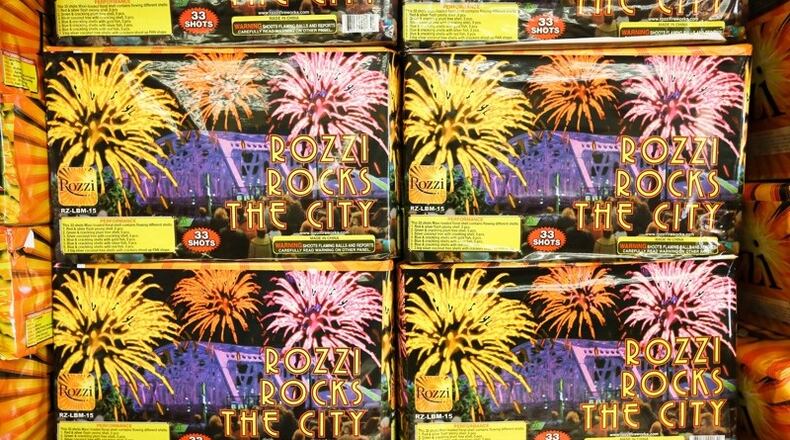State lawmakers are considering a bill to legalize fireworks for consumers starting July 1, 2020. House Bill 226 was introduced in May and will likely be considered again in the fall.
The measure faces stiff opposition from fire officials, pediatricians and others who warn that such a move would lead to structure fires, property damage and injuries.
Related: Ohio may legalize fireworks for home use
According to the Ohio Fireworks Safety Coalition, a group of a dozen medical, fire and child safety experts, new data show 11,100 people went to emergency rooms for firework-related injuries in 2016. That doesn’t include people who were treated at urgent care centers, doctor’s offices or other settings.
Half of those injured were bystanders and 31 percent were children under age 15.
Nationwide, 44 states allow consumers to discharge 1.4g fireworks — such as Roman candles, firecrackers and bottle rockets. Of those 23 states limit their use to around the 4th of July and or New Year’s, according to the safety coalition.
This year, it’s only legal to use “novelty” items such as sparklers and smoke snakes. Consumer 1.4g fireworks, such as firecrackers and bottle rockets, can be purchased by adults but cannot be legally used in Ohio.
Related: Ohio changes its 'liar's law' on fireworks
If House Bill 226 becomes law, it would allow Ohioans to buy, possess and use 1.4g fireworks on their own property or others’ property with permission; require sellers to give safety pamphlets to buyers; impose a 4 percent fee on sales to fund firefighter training and oversight; and allow cities, counties and large townships to restrict the times and dates the fireworks may be used.
Included in the state budget bill that Gov. John Kasich just signed into law is a provision to extend a moratorium to September 2018 on the number of state licenses for fireworks sellers.
Legal or not, fireworks is big money across the nation. Consumers spend roughly $600 million on fireworks for the Fourth of July and a 15-minute show for family and friends costs $500 to $1,000, according to research by H&R Block.
Six Fun Facts about Fireworks
1. Standard aerial fireworks come in four main parts — a cylindrical paper container with string, cubes or spheres containing the chemicals needed for reaction, a bursting charge containing black powder, a fuse with a time delay.
2. Color combos are produced in the sky when metal elements are heated, exciting electrons and releasing excess energy in the form of light.
3. Fireworks are the result of chemical reactions involving a fuel source, an oxidizer and a chemical mix.
4. Patterns or shapes of a firework hinge on how the stars are arranged inside the shell.
5. Fireworks generate three forms of energy: sound, light and heat.
6. Boom! The sound you hear after the explosion is the quick release of energy, which causes the air to expand faster than the speed of sound, causing a shockwave.
Source: U.S. Department of Energy
About the Author

